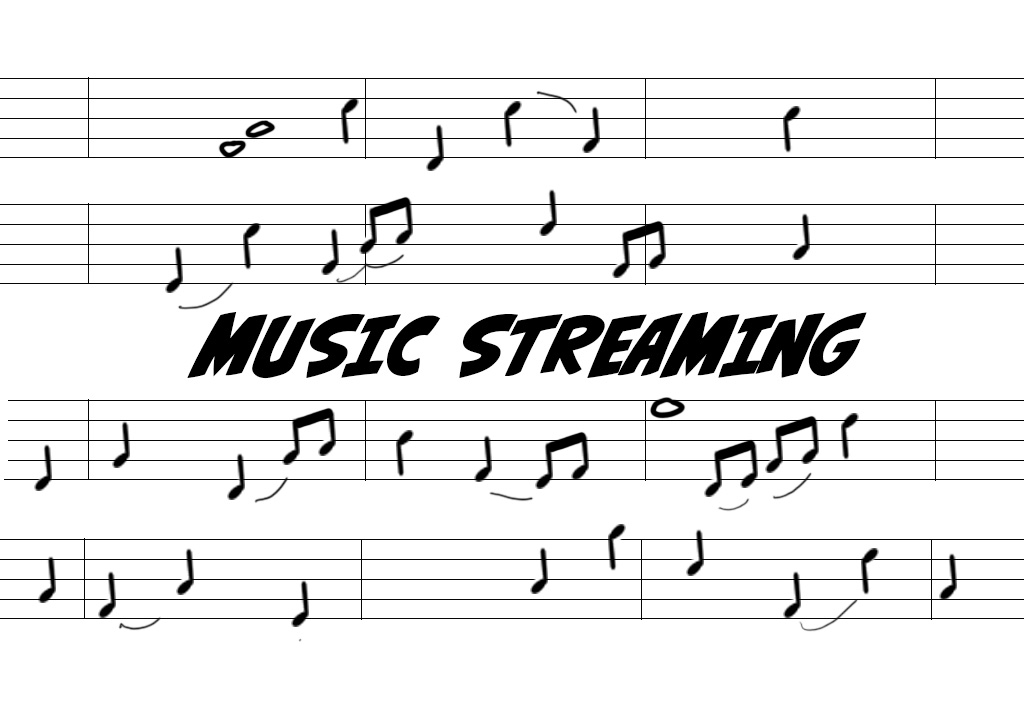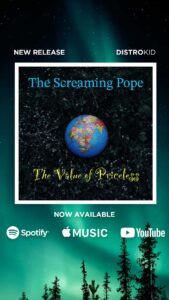
Music streaming has become increasingly popular. Graphic by The Signal reporter Alfonso Alvarez.
It seems like a distant memory when thinking about how people used to listen to music. Long gone are the days of CDs, cassettes, vinyl and digital purchases of an artist’s work.
Music streaming has become the fastest and most popular form of listening to a fan’s favorite music artist’s work. Not surprisingly, a number of music artists are against music streaming. Is music streaming a good or bad thing for artists? Simple answer: yes and no.
Why do artists have a problem with their music being streamed? It is about the money they earn from streaming. The price of music streaming is generally $10 a month, and that entitles subscribers to an absurd amount of music to choose from. The average price of a single CD is $13 and vinyl, which is making a comeback, is even higher at $12 – $40. Music streaming’s low price and high consumption rate are what keeps people from buying artists’ physical albums.
That is not to say that people will not still buy albums; there are fans out there who will support specific artists and purchase physical copies of their work. However, it is difficult to ignore the prices of physical copies compared with the low prices of what listeners get off streaming. Not to mention that Spotify also has a special membership plan for college students that includes Spotify Premium and ad-supported Hulu and Showtime for $5.
So, how much does an artist earn from streaming music? Digg.com recently published a visual that displays the number of streams artists must have in order for them to earn one $1. Spotify, which is the single-largest music streaming service, requires artists to have 229 streams before they earn a dollar. That is $0.00437 per stream. YouTube Music is the worst culprit, which requires 1,449 streams to make a dollar, which is about $0.00069 per stream.
A positive thing artists do get from music streaming is exposure. While customers often use streaming services to search for work by specific artists, these services also help lesser-known artists garner some listeners. Spotify has an algorithm that creates playlists for subscribers based on the music they listen to. This helps small bands who cannot tour like larger artists introduce their music to listeners all over the world. Some of the better-known artists have had a harder time adjusting to the low compensation that streaming offers.
In 2015, Jay Z purchased Tidal, a rival streaming service that promised to focus on sound quality and to become an artist-friendly streaming service. Jay Z has been open about his dislike for services like Spotify and Apple Music, branding them as not artist-friendly. Taylor Swift pulled her entire category from Spotify back in 2014 but had a change of heart about the streaming service. In 2018, she recorded a video for her newest single “Delicate” exclusively for Spotify users.
Music streaming has created a great divide when it comes to the music industry. On one hand, it is hard to ignore the benefits fans receive for the price they pay. On the other, musicians do not receive the compensation they deserve, although new or lesser-known artists received increased exposure.
On one side there are artists who are happy with having their music heard wherever possible. On the flip-side, there are artists, labels and executives who are unhappy with the financial side of music streaming. Music streaming is a controversial subject in the music industry, but overall it is the future of music interaction.
The real winners in this great divide are the fans. With a low monthly subscription fee of $10, fans have access to thousands of artists and their entire catalog. For less than the price of a single CD, music streaming delivers whole catalogs of songs for a low monthly fee.






